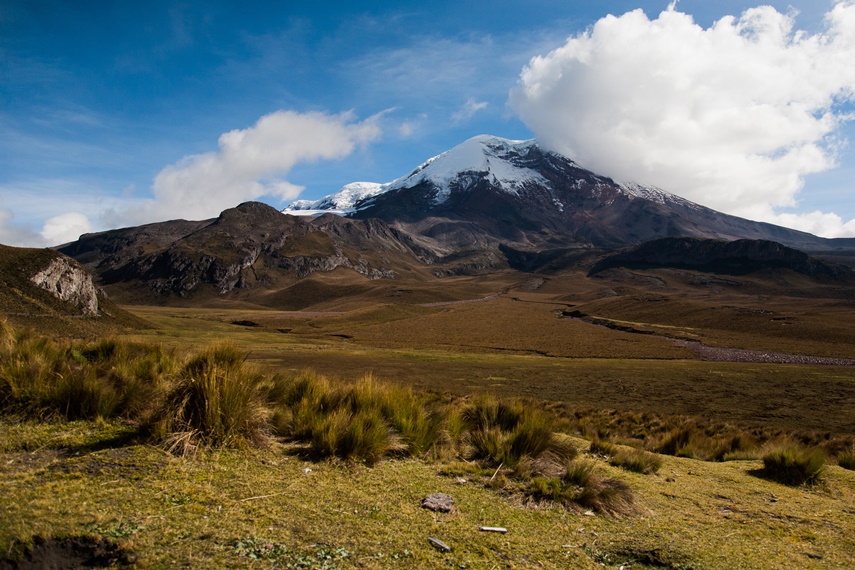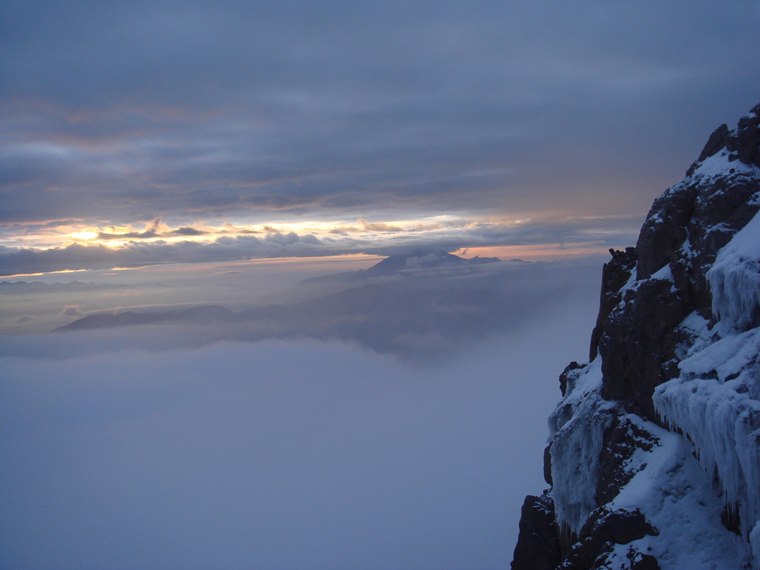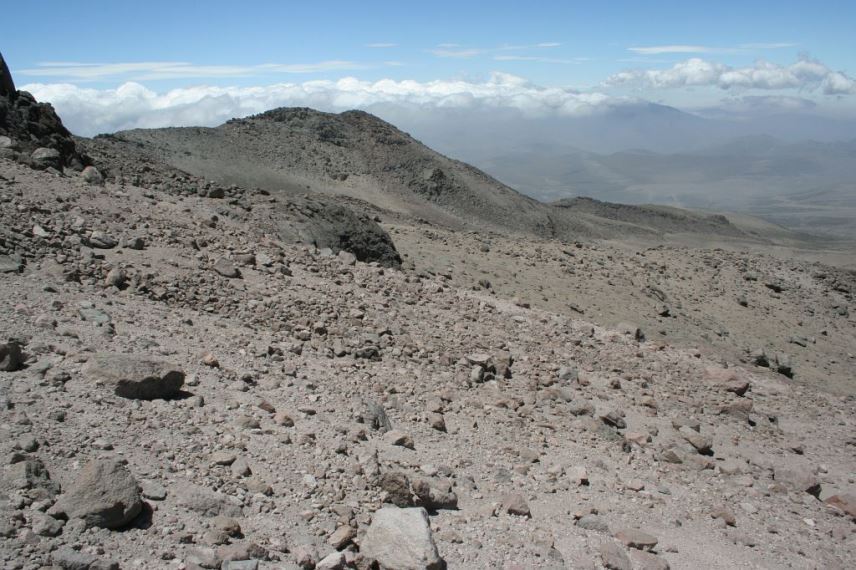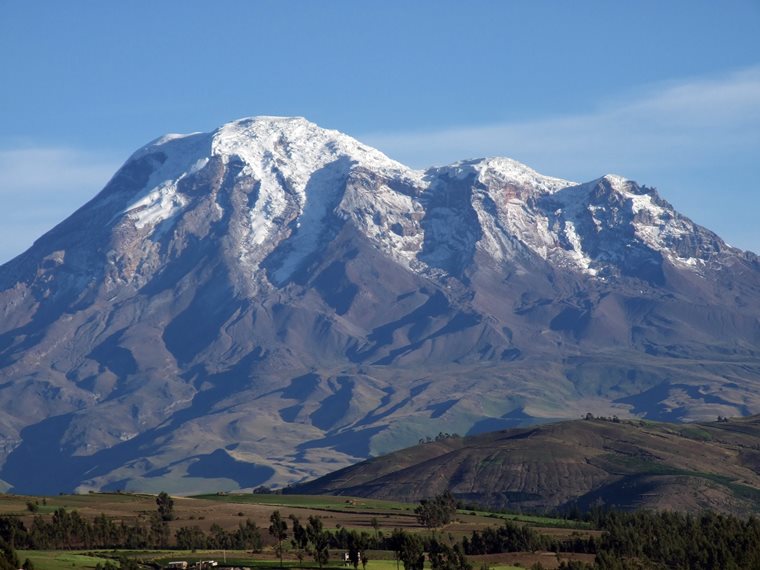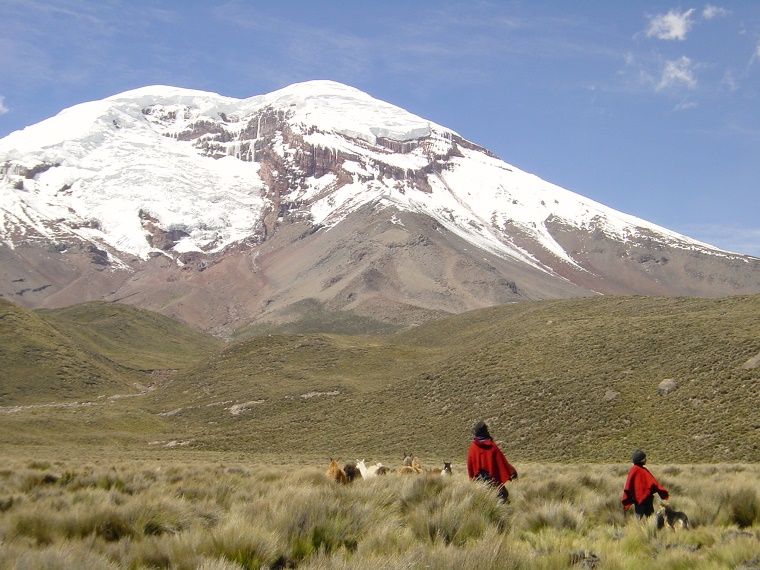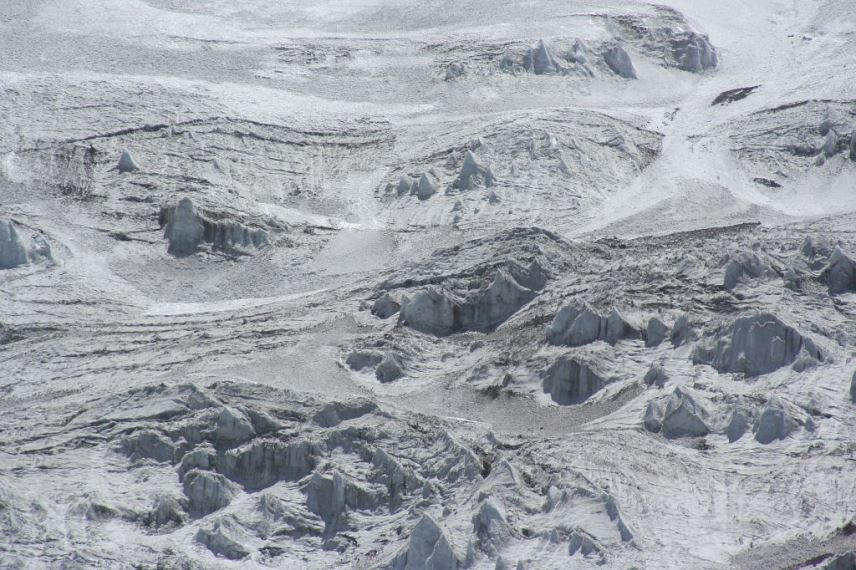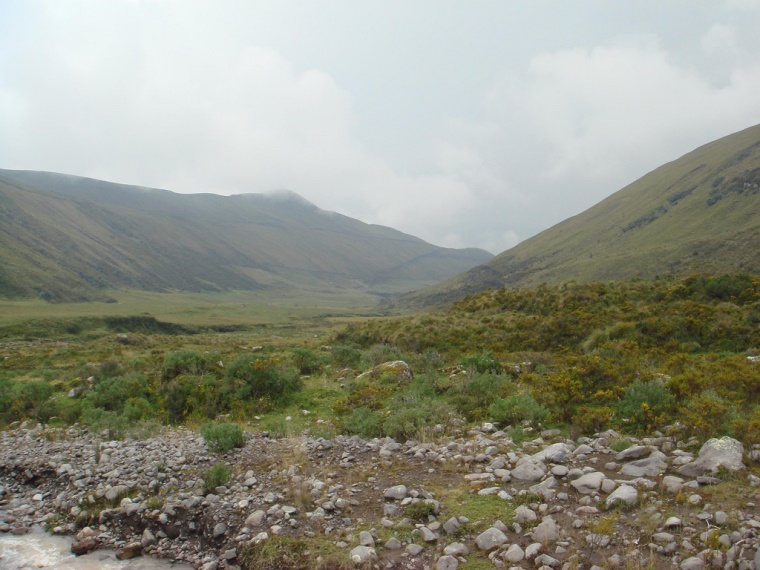Chimborazo Area
Key information: Chimborazo Area 
- Ecuador's highest mountain stands serenely clear of its neighbours, a huge white mass which is often at least partially obscured by clouds.
- Glaciers, now sadly shrinking, fall off its sides. Its flanks vary between semi-desert to its west and south, and paramo to the east and north, with rough moraine on the higher slopes. The mountain is at the heart of its own fauna reserve.
- The wildly eroded and spires and crags of Carihuairazo sit 10km to the north-east, in smile-inducing visual counterpoint to Chimborazo's snowy, harmonious serenity.
- As well as the peaks, there are very fine treks to be done on the gorgeous slopes, with world-class views.
Walkopedia rating
- Walkopedia rating86
- Beauty32
- Natural interest17
- Human interest5
- Charisma32
- Negative points0
- Total rating86
Vital Statistics
- Length: Your choice
- Maximum Altitude: 6,310 m
- Level of Difficulty: Variable
This walk description page is at an early stage of development, and will be expanded over time. Your comments on this walk, your experiences and tips, and your photos are very welcome.
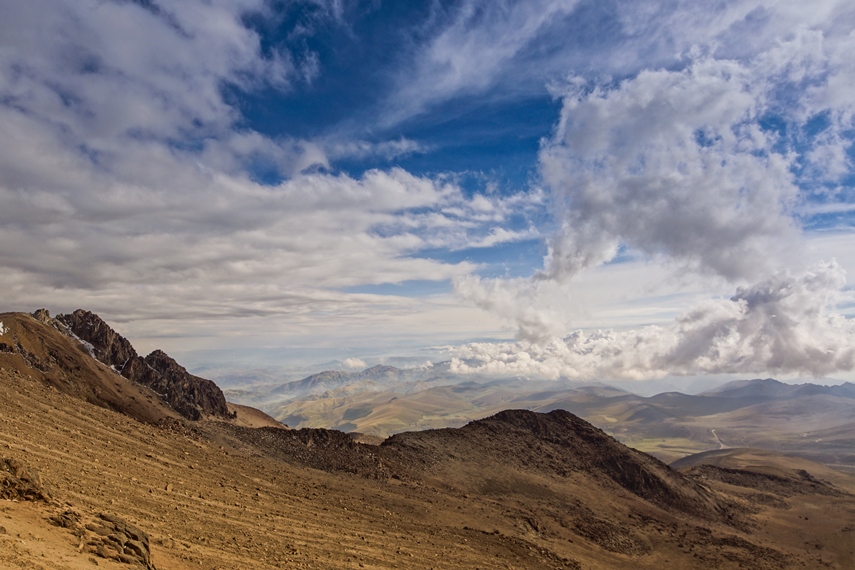
WALK SUMMARY
Ecuador's highest mountain, at 6,310m, stands serenely clear of its neighbours, more than 1,000m higher and a huge white mass which is often at least partially obscured by clouds. This extinct volcano was at one stage believed to be the highest mountain in the world, and indeed is higher than Mount Everest, in that it is further from the centre of the earth as a result of the planet's equatorial bulge. There is no mountain in the Americas taller than it - to its north!
While its summit is a huge permanent icefield, and from below it looks like a great white dome, it is actually two peaks with 5 summits. Glaciers, now sadly shrinking, fall off its sides. Its flanks vary between semi-desert to its west and south, and paramo (high tussocky grasslands) to the east and north, with rough moraine on the higher slopes.
The mountain is at the heart of its own fauna reserve, and you should see llamas, alpacas, foxes and local rabbits on the trek, and possibly vicuna, which have been reintroduced on its north-east slopes.
The wildly eroded and spires and crags of 5,020m Carihuairazo sit 10km to the north-east, in smile-inducing visual counterpoint to Chimborazo's snowy, harmonious serenity (from the plains!)
It is worth mentioning that it can be persistently cloudy here, so you can be denied much of the views if you are unlucky.
Climbing Chimborazo peak itself is beyond walking as it is usually known, although still not necessarily technical. There are various walks you can make on the lower slopes, to enjoy the majesty and beauty of the landscape and the glories of its vegetation and wildlife.
Climbing Chimborazo: Given that people die of altitude sickness every year on Kilimanjaro, which is some 1,300m shorter than Chimborazo, you can see that climbing it is a serious undertaking. While it isn't a technical climb, it requires proper ice equipment, good route knowledge and a lot of time spent acclimatizing. Best months are December and January.
The main route approaches the Edward Whymyer hut from the west; a reasonably steady climb to the hut at 5,000m. The ascent is on crevassed glacier, scree and rock, and takes 8-10hrs up and 3-5 down. The views from the top are (on a clear day) some of the best in Ecuador.
Climbing Carihuairazo: this is a superb climb with close-up views of Chimborazo and its glaciers as well as more distant peaks. Demanding.
Non-climbing treks:
There is a pair of superb hikes between Chimborazo and Carihuairazo.
The first is tougher and takes 3 days and climbs from the Panamericano high into the Carihuairazo massif (to around 4,600m), before dropping to the gap between the great mountains and circling round to the north of Chimborazo to reach the Guaranda-Ambato highway.
The second, relatively easier (2 days and reaching a mere 4,400m), climbs Chimborazo's slopes to near its eastern glaciers, reaching the Laguna Cocha Negra, where you can camp. From here you can continue north-east on the exit route of the first trek, or return to the Panamericano.
You can walk up for a night at the Edward Whymer hut on (5,000m) Chimborazo in 4-7 hrs. (You can drive to quite near the hut too). Superb scenery and great atmosphere.
Both walks can be linked together to create a wonderful circuit high into the massif to/from the Panamericano. 3 days. One of Ecuador's finest walks?
See our Treks between Chimborazo and Carihuairazo page.
Ecuador Climbing and Hiking Guide - Viva,has a worthwhile section on this walk. Find relevant books on Amazon:
This page is at an early stage of development. Please help us by making suggestions and sending photos! Thank you!
Other accounts: share your experiences
Your comments on this walk, your experiences and suggestions, and your photos are very welcome. Where appropriate, you will be credited for your contribution.
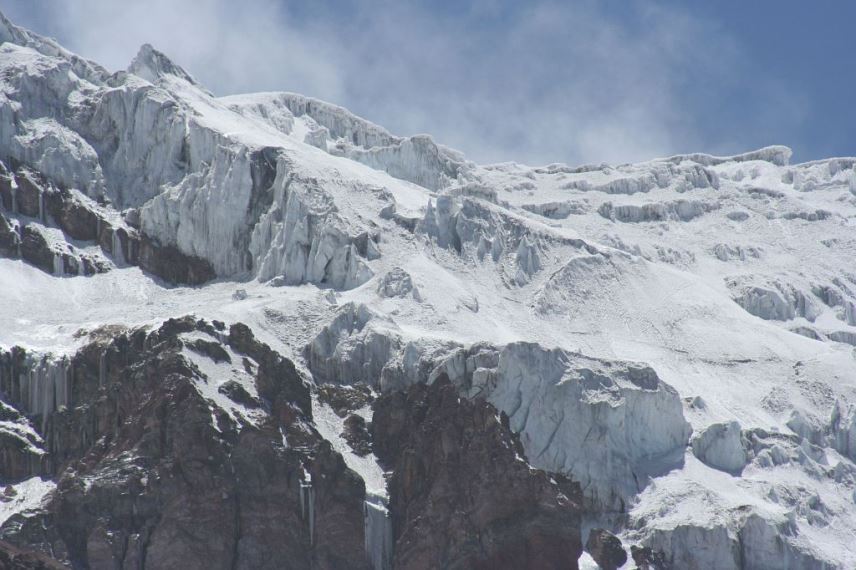
We have a lot of helpful practical information and tips about this walk, covering everything from the best books and maps, to timing and weather, geting there, possible problems, whether you need a guide and where to find them, and useful websites. This section is only open to members.
Membership is FREE AND JOINING TAKES 30 SECONDS. To login or sign up click here
Safety and problems: All walks have inherent risks and potential problems, and many of the walks featured on this website involve significant risks, dangers and problems. Problems of any sort can arise on any walk. This website does not purport to identify any (or all) actual or potential risks, dangers and problems that may relate to any particular walk.
Any person who is considering undertaking this walk should do careful research and make their own assessment of the risks, dangers and possible problems involved. They should also go to “Important information” for further important information.
Anyone planning an expedition to this place should see further important information about this walk.
Safety and problems: All walks have inherent risks and potential problems, and many of the walks featured on this website involve significant risks, dangers and problems. Problems of any sort can arise on any walk. This website does not purport to identify any (or all) actual or potential risks, dangers and problems that may relate to any particular walk.
Any person who is considering undertaking this walk should do careful research and make their own assessment of the risks, dangers and possible problems involved. They should also go to “Important information” for further important information.
OTHER ACCOUNTS
share your experiences
Add your experiences, suggestions and photos. We would be delighted to receive your writing and ideas (which will be attributed appropriately where published).
Anyone planning an expedition to this place should see further important information about this walk.
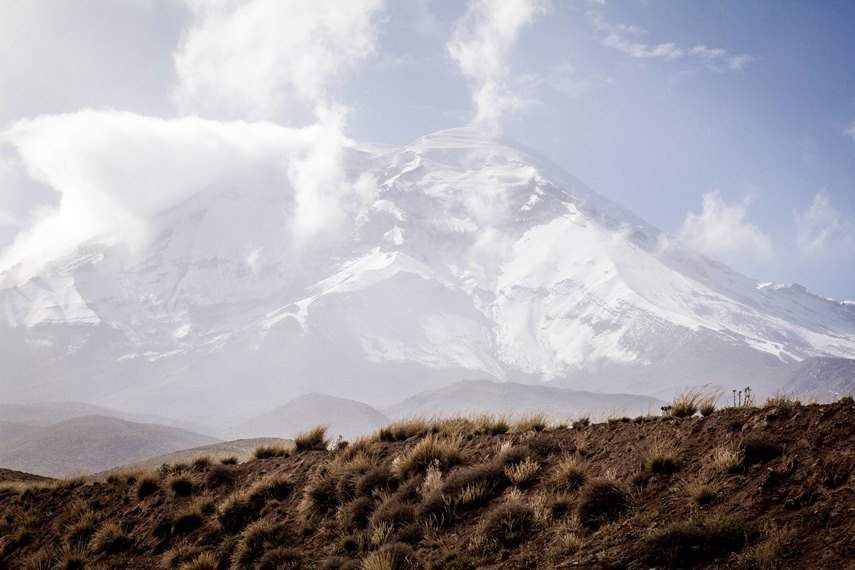
Responsible travel matters, a lot. How you travel will make a real difference - for better or worse. PLEASE consider this when making plans. Read more



